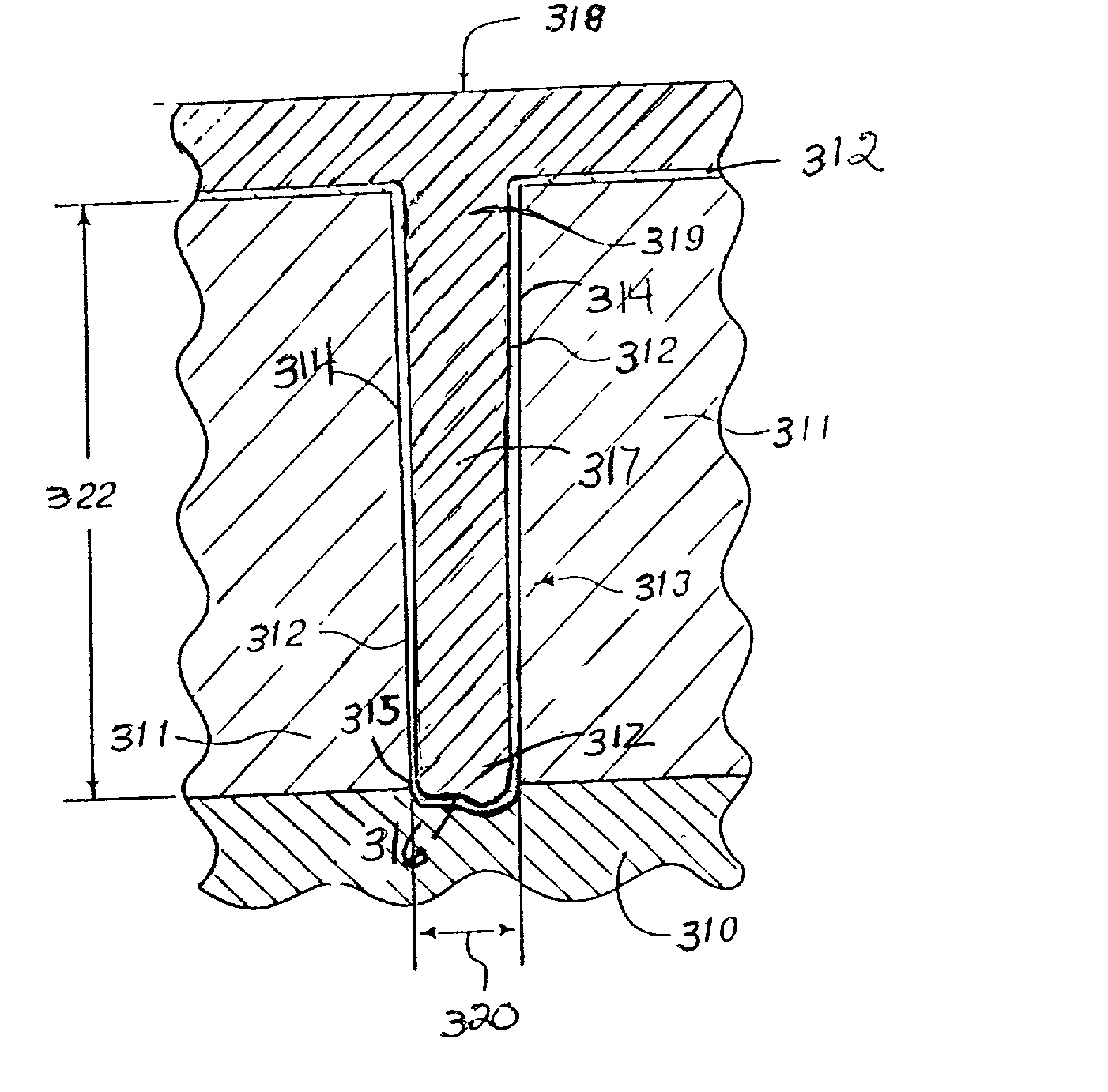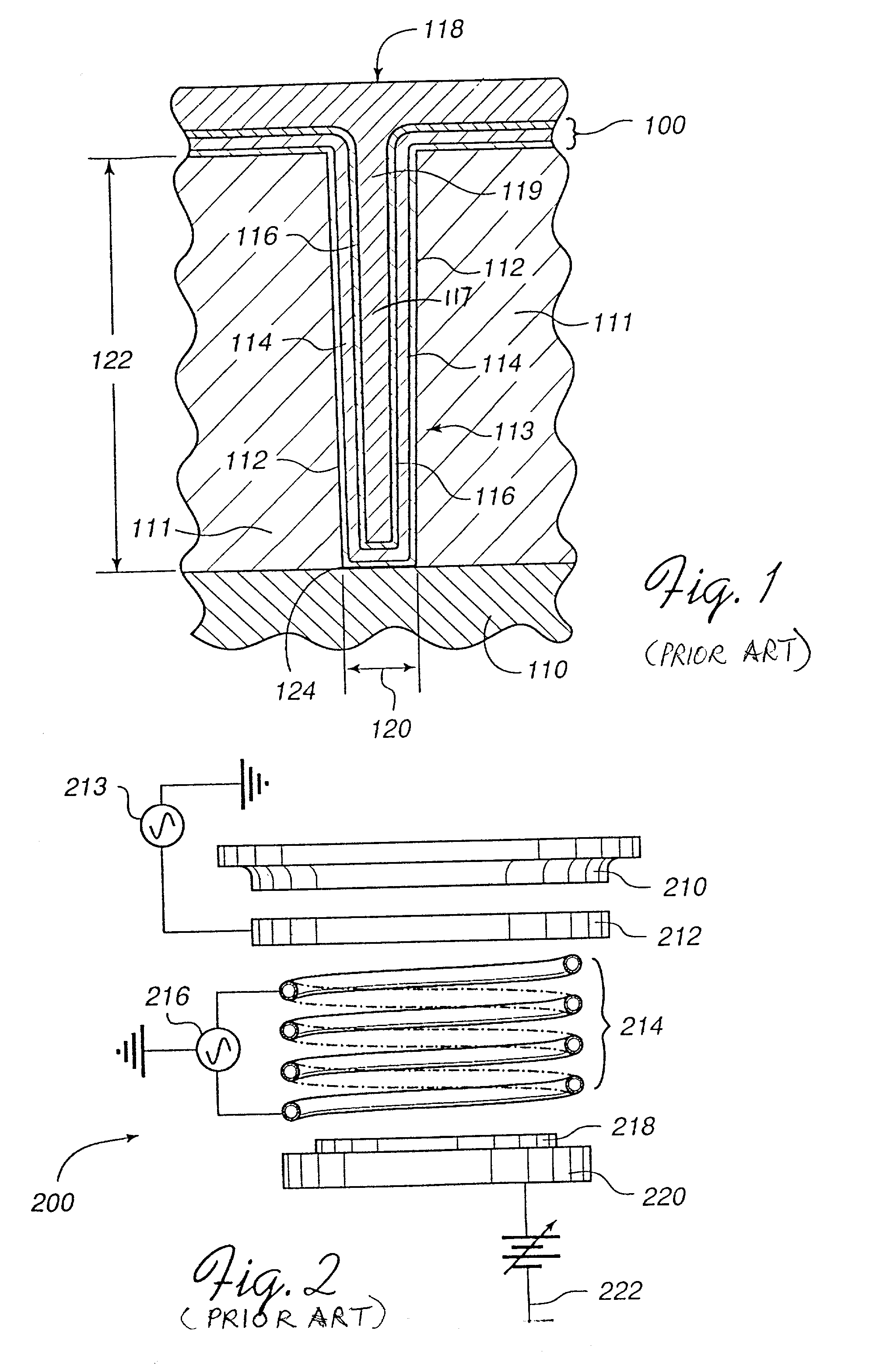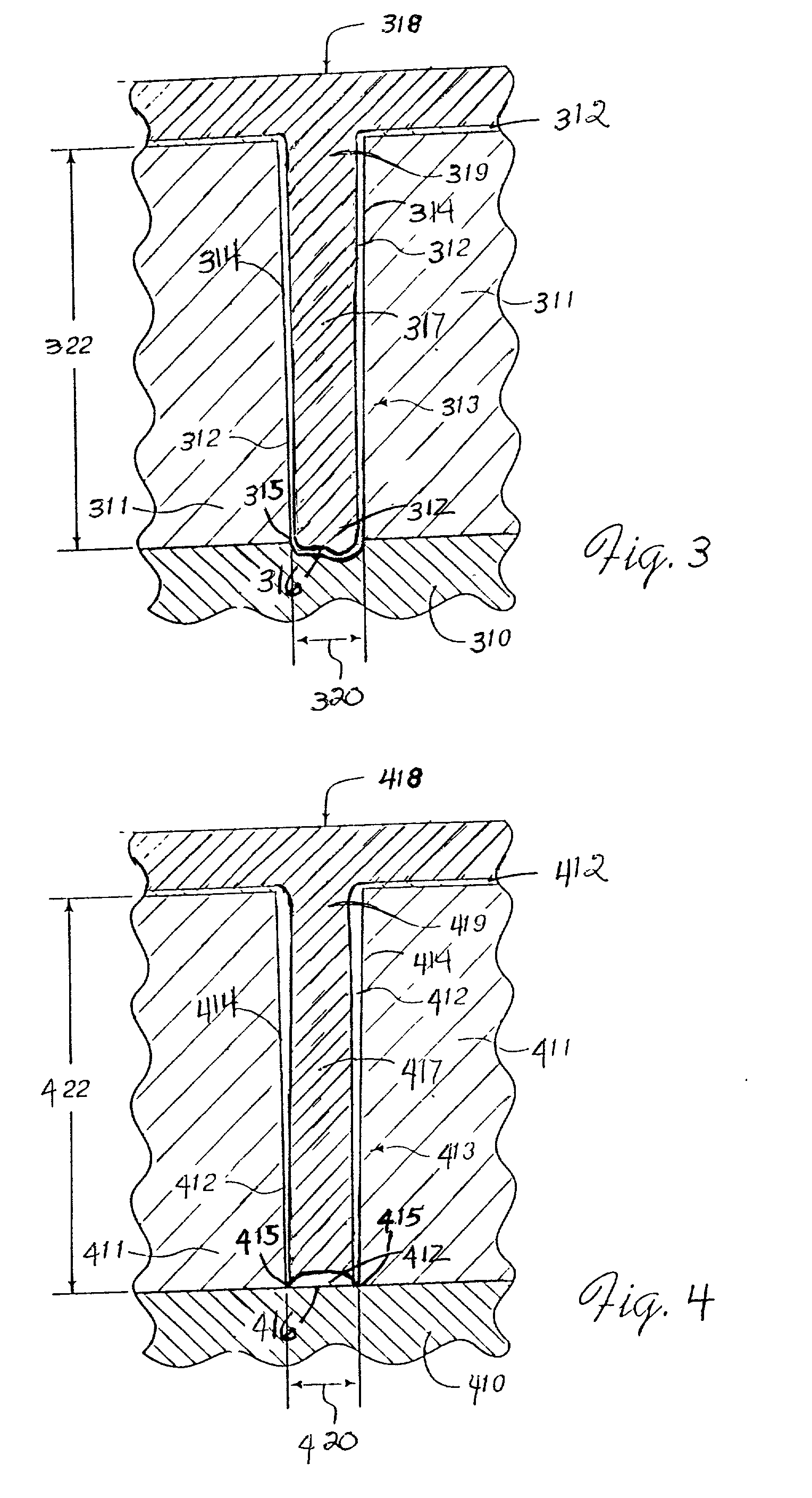Damage-free sculptured coating deposition
a sculptured coating and sculpture technology, applied in the field of sculptured coating deposition, can solve the problems of difficult to use the techniques known in the art to provide multi-level metallurgy processing, the standard reactive ion etching method often used for patterning a blanket metal is particularly difficult with copper, and the applicability of alternative deposition lift-off techniques is limited
- Summary
- Abstract
- Description
- Claims
- Application Information
AI Technical Summary
Problems solved by technology
Method used
Image
Examples
example two
[0059] FIG. 4 shows a schematic of a SEM profile of a silicon wafer substrate 410 with a silicon dioxide dielectric layer 411 deposited thereovcr. The silicon dioxide layer 411 had been patterned to contain a via 413 having a bottom dimension 420 of 0.35 .mu.m and a height 422 of 1.2 .mu.m. A tantalum barrier layer 412 was applied over the surface 414 of the via 413 using an ion-deposition plasma process. In particular, the DC power to the target was 2 kW, the RF power to the coil (at 2 MHz) was 1.5 kW. In this instance there was no bias to the substrate. The pressure in the vacuum chamber was about 40 mT, and the temperature of the substrate at the time of deposition of the tantalum barrier layer 412 was about 75.degree. C. Tantalum was deposited for a period of about 60 seconds. The absence of substrate bias resulted in the deposit of a large quantity of tantalum at the bottom 416 of via 413. The tantalum layer 412 was about 1,200 .ANG. thick 424 on the substrate surface, about 40...
example three
[0062] FIG. 5 shows a schematic of a SEM profile of silicon wafer substrate 510 with a silicon dioxide dielectric layer 511 deposited thereover. The silicon dioxide layer 511 had been patterned to contain a via 513 having a bottom dimension 520 of 0.35 .mu.m and a height 22 of 1.2 .mu.m. A tantalum barrier layer 512 was applied over the surface 514 of the via 513 using an ion-deposition plasma process. In particular, an initial deposition of tantalum was made using a DC power to the target was 2 kW, the RF power to the coil (at 2 MHz) was 1.5 kW, the pressure in the vacuum chamber was about 40 mT, and the substrate temperature was about 25.degree. C. Tantalum barrier layer 512 material was applied for about 15 seconds without the application of substrate biasing power.
[0063] The substrate bias was then applied to -60V (250 W), and additional tantalum was applied using ion deposition plasma for a period of about 45 seconds. The pressure in the vacuum chamber was about 40 mT and the s...
PUM
| Property | Measurement | Unit |
|---|---|---|
| thickness | aaaaa | aaaaa |
| size | aaaaa | aaaaa |
| aspect ratio | aaaaa | aaaaa |
Abstract
Description
Claims
Application Information
 Login to View More
Login to View More - R&D
- Intellectual Property
- Life Sciences
- Materials
- Tech Scout
- Unparalleled Data Quality
- Higher Quality Content
- 60% Fewer Hallucinations
Browse by: Latest US Patents, China's latest patents, Technical Efficacy Thesaurus, Application Domain, Technology Topic, Popular Technical Reports.
© 2025 PatSnap. All rights reserved.Legal|Privacy policy|Modern Slavery Act Transparency Statement|Sitemap|About US| Contact US: help@patsnap.com



